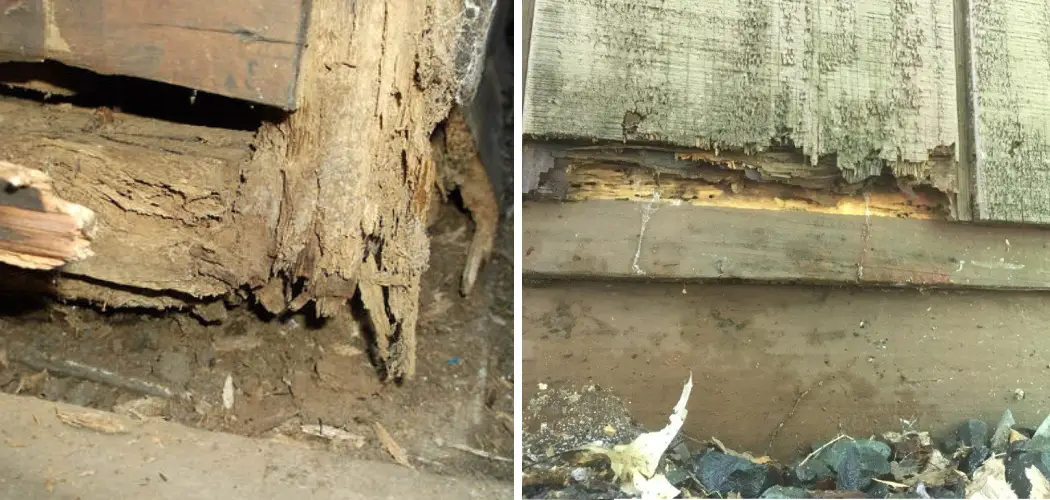Are you noticing the bottom of your garden shed rotting away? Does it look like it needs a good repair job, but you don’t really know where to start? We have some great news; there are plenty of ways to stop the decay and restore your shed to its former glory. In this blog post, we’re going to walk you through essential tips on how to stop bottom of shed rotting. Read on for everything you need to get started!
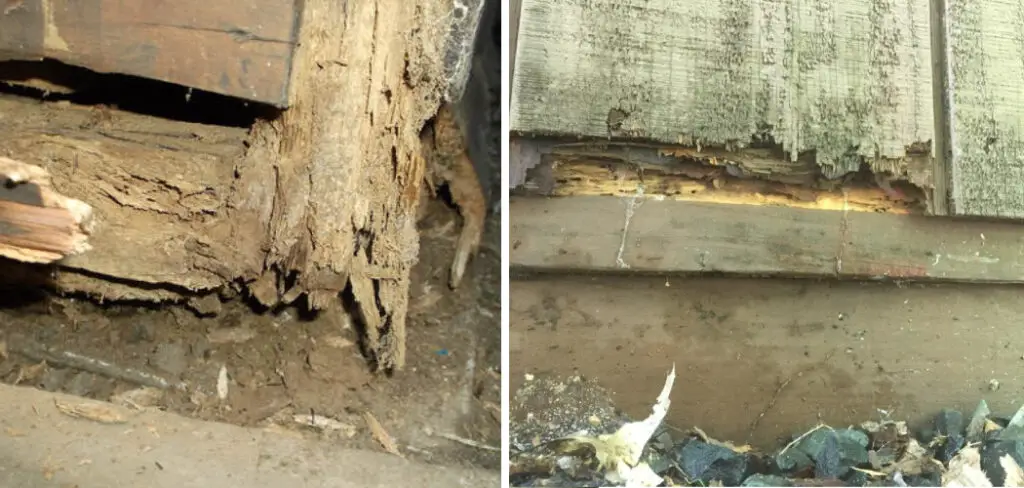
We have some great news; there are plenty of ways to stop the decay and restore your shed to its former glory. In this blog post, we’re going to walk you through essential tips to stop bottom of shed rotting. From choosing an appropriate sealant or coating right down to simple maintenance tips for keeping the underside damage-free in the future – read on for everything you need to get started!
Why is It Important to Stop Bottom of Shed Rotting
1 . To Protect Your Shed’s Structure
By keeping the bottom of your shed from rotting, you can protect its structural integrity. If the bottom of a shed begins to rot, it can become weak and vulnerable to collapse or other damage. This is especially true if there is a weight on top of the structure such as heavy equipment, tools, or stored items. Keeping the bottom of your shed free from rot is essential for maintaining its structural integrity and preventing costly damage.
2 . To Maintain the Appearance of Your Shed
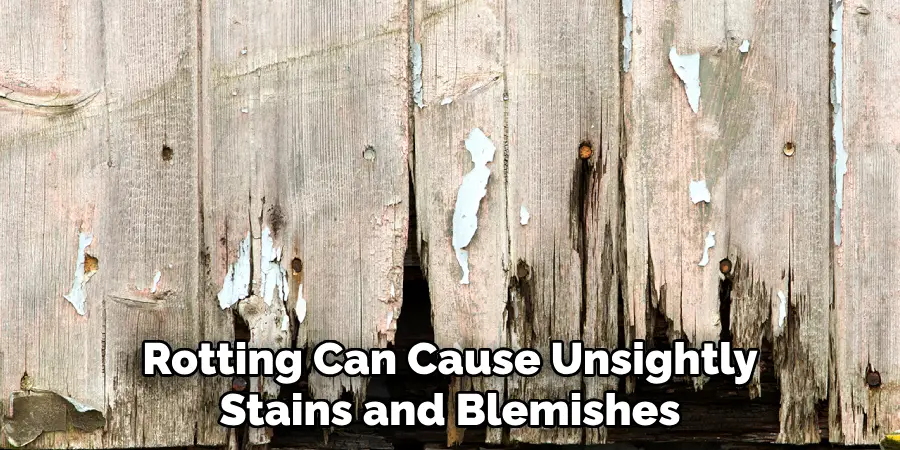
Rot can also have a major impact on the appearance of your shed. If left unchecked, rotting can cause unsightly stains and blemishes to form on the surface of the wood or other material that makes up the shed. This can quickly ruin the look of your shed and make it less attractive and inviting for visitors.
3 . To Keep Your Shed Weatherproof
Rotting can also have an impact on the weatherproofing of your shed. Rotting wood is more vulnerable to damage from water, wind, or other elements that could potentially cause further deterioration. By preventing or repairing rot, you can keep your shed weatherproof and protect it from further damage.
10 Tips on How to Stop Bottom of Shed Rotting
1 . Invest in a Shed With Pressure-treated Wood
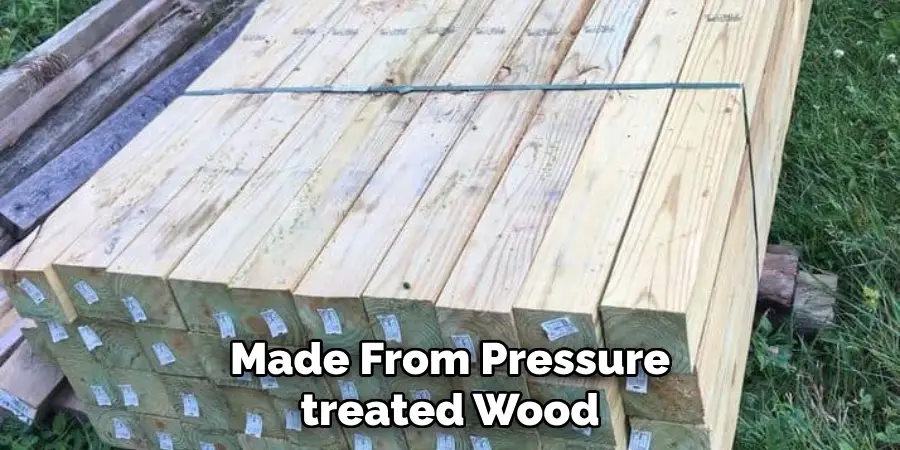
When it comes to avoiding rot on the bottom of your shed, you need to invest in one made from pressure-treated wood. Pressure-treated lumber is resistant to moisture, fungi, and other types of decay which makes it far better for use in outdoor structures such as sheds.
2 . Ensure Proper Shed Ventilation
Another important factor in preventing rot on the bottom of your shed is ensuring proper ventilation. This can be done by adding air vents to the walls which allow for the shedding of moisture and humidity from inside the structure.
3 . Keep Your Shed Cleaned Regularly
You should also make sure to keep your shed clean and free of debris and dirt. Make sure to sweep up any leaves or other organic material that falls around the base of your structure.
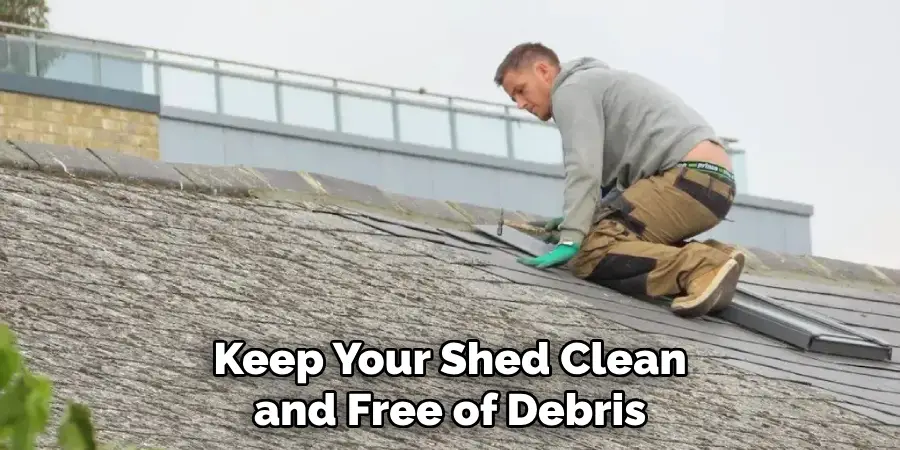
4 . Create a Dry Base for Your Shed
You should also take the time to create a dry, level base for your shed. This means adding a layer of gravel and sand beneath the floor joists which will help to keep the bottom of your shed free from moisture.
5 . Install a Shed Roof Overhang
Adding an overhang to your shed’s roof can also be beneficial in preventing rot on the bottom of your structure. An overhang will prevent rain and snow from directly hitting the walls or floor, which can help to protect them from decay.
6 . Add a Shed Floor Covering
Adding a floor covering to your shed can also be beneficial in preventing rot on the bottom of your structure. A waterproof fabric can be used to cover the floor and help keep moisture out, while still allowing air to circulate.
7 . Use Protective Paint or Sealant on Your Shed
Using protective paint or sealant on the exterior walls and floor of your shed can also help to keep moisture out. This should be done every two years or so, depending on weather conditions in your area.
8 . Replace Damaged Wood Promptly
If you notice any signs of rot or decay on the bottom of your shed, you should take the time to replace it with new, pressure-treated lumber. This will help ensure that your shed is well-protected and remains free from rot for years to come.
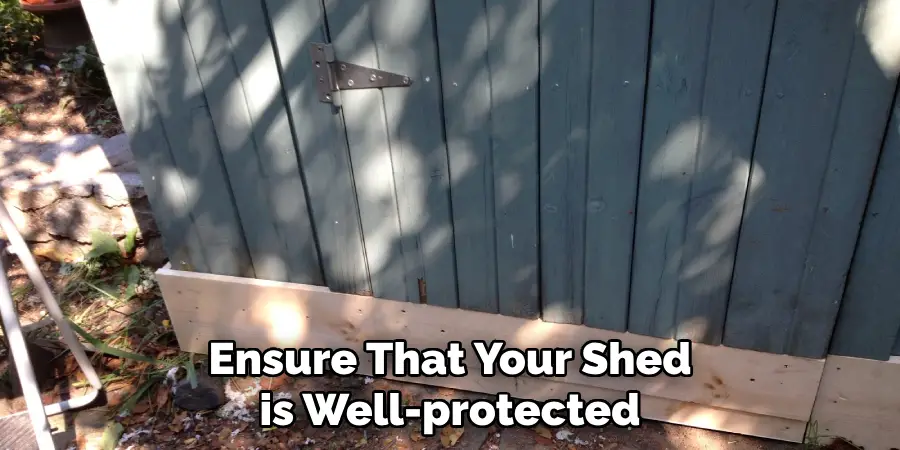
9 . Install Gutter System
Installing a gutter system can also be beneficial in preventing rot on the bottom of your shed. Gutters will help to keep water away from the walls and floor of your shed, which will reduce the amount of moisture that can potentially cause rot.
10 . Ensure Proper Drainage Around Your Shed
Finally, you should take the time to ensure proper drainage around your shed. This includes making sure that there is no standing water near the base of your structure and ensuring that any grade away from your shed slopes downward. This will help to keep moisture away from your shed and reduce the chances of rot occurring on its bottom.
With these 10 tips, you can ensure that your shed remains free from rot for years to come. By investing in a quality structure, maintaining proper ventilation and drainage, and taking the time to regularly clean and inspect it, you can be sure that your bottom of shed won’t get affected by rot. So start taking the necessary steps to protect and maintain your shed today!
Frequently Ask Question
What Precautions Should I Take to Avoid Shed Rotting?
There are a few basic precautions you can take to protect the bottom of your shed from rotting. Make sure that your shed has enough clearance from the ground, as this will help keep moisture away from its base and reduce the chances of rot occurring.
Additionally, you can add a protective sealant to the shed’s baseboard and exterior walls that will help prevent moisture from seeping in. Finally, make sure your shed is always properly ventilated; this will reduce the amount of moisture buildup inside it which can lead to rot. Taking these simple steps will help ensure your shed stays in good condition for years to come!
What Materials Should I Use to Prevent Shed Rotting?
When constructing a shed, it is important to use materials that are resistant to moisture and decay. Pressure-treated wood is a good choice for the base of your shed, as it is designed specifically to resist rot and other forms of water damage.
Additionally, consider using metal or plastic for the exterior walls of your shed, as these materials are also highly resistant to moisture. By using the right materials and following the aforementioned precautions, you can help protect your shed against rot for years to come.
How Can I Repair an Existing Shed that is Rotting?
If your shed has already started to show signs of rot, it is important to take action quickly in order to prevent further damage. One option is to replace any rotted boards or panels with new ones, making sure that the materials used are properly treated and sealed against moisture. If replacing all of the affected wood is not an option, then you can look into using a rot repair compound which will help seal any exposed wood from further damage.
Additionally, you can add a protective sealant to the shed’s baseboard and exterior walls which will help protect it from future damage. Taking these steps will help ensure that your existing shed doesn’t succumb to further rot, and that it stays in good condition for years to come.
Can Rotting Damage Other Parts of My Shed?
Unfortunately, rot can spread from the bottom of your shed to other parts if not addressed promptly. If the rotting is severe, then it could result in structural damage to your shed’s walls and roof. Additionally, dampness caused by rot can lead to mold and mildew growth which can cause health problems for anyone nearby.
Therefore, it is important to take steps to prevent rot before it has a chance to spread and cause further damage. Taking the appropriate precautions can help keep your shed safe from rotting for years to come.
Conclusion
Ultimately, preventing the bottom of your shed from rotting is all about ensuring proper drainage and keeping it clean. Start by determining if you have a waterproofing issue, then act accordingly. Move any items close to the floor away so that air can circulate and keep moisture away. And don’t forget to clean the shed regularly! The floor is especially important here since it serves as the foundation for the entire structure.
Now you know how to stop bottom of shed rotting! Finally, consider campaigning for improvements to your drainage system if necessary – there are plenty of solutions available out there that could help you extend the life of your shed and keep its contents safe and dry. Taking a preventative approach now will ensure you won’t need more costly repairs later on down the road.
About
Outdoor Fixes is a distinguished figure in the world of Diy design, with a decade of expertise creating innovative and sustainable Diy solutions.
His professional focus lies in merging traditional craftsmanship with modern manufacturing techniques,
fostering designs that are both practical and environmentally conscious. As the author of diy,
outdoorfixes delves into the art and science of outdoorfixes-making, inspiring artisans and industry professionals alike.
Education RMIT University
(Melbourne, Australia) Associate Degree in Design (Outdoor Fixes) Focus on sustainable design, industry-driven projects,
and practical craftsmanship. Gained hands-on experience with traditional and digital manufacturing tools, such as CAD and CNC software.
Nottingham Trent University
(United Kingdom) Bachelor’s in outdoorfixes.com and Product Design (Honors) Specialized in product design with a focus on blending creativity with production
techniques. Participated in industry projects, working with companies like John Lewis and Vitsoe to gain real-world insights.
Publications and Impact
In diy, Outdoor Fixes his insights on indoor design processes, materials, and strategies for efficient production.
His writing bridges the gap between artisan knowledge and modern industry needs, making it a must-read for both budding designers and seasoned professionals.

